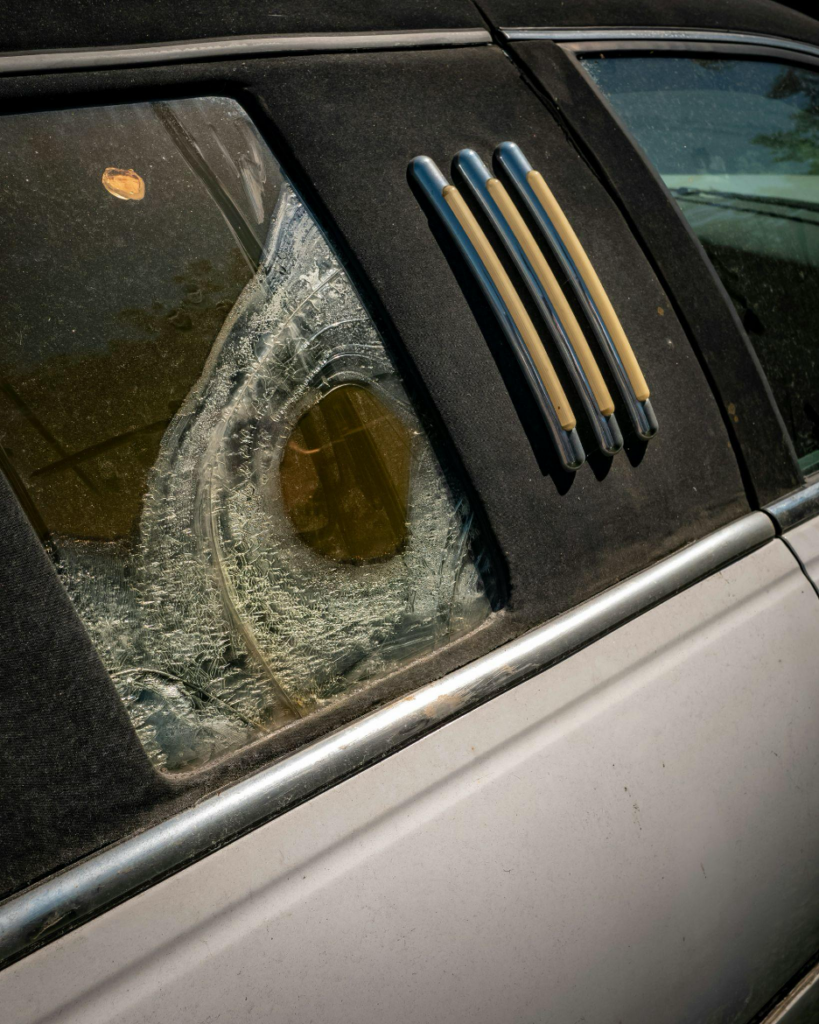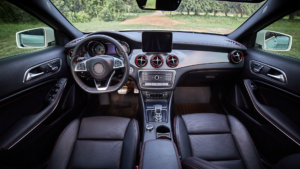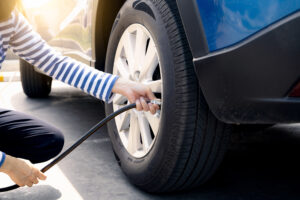By Clinton Engelberger
Owning your first car is a big deal. It’s a symbol of newfound freedom and independence, and quite literally changes the way you live your life. But along with all the excitement comes a bit of responsibility. There are common mistakes first-time car buyers often don’t notice – until the car is already parked in their driveway.
Whether you’re buying new or preowned, here are a few pitfalls to avoid before you head to the dealership.
Mistake 1: Not Budgeting

If you expect to purchase your car at the sticker price and ride off into the sunset like they do in the movies, you’re in for a sour ending.
Owning a car comes with a multitude of hidden expenses, such as maintenance, gas, parking and insurance.
You’ll need to budget for hidden costs like these, and then some more for unexpected events like an accident.
Here’s how you can properly budget for your first car after you buy it:
- 10-15% of your annual income for total car expenses.
- $500-800 per month for ownership costs such as payments, insurance, fuel and maintenance.
- A separate emergency fund for unexpected repairs and depreciation losses.
For more helpful tips on budgeting for hidden costs, check out this article from carXplore here.
Mistake 2: Failing To Negotiate

You’re about to enter dangerous territory, occupied by a greedy few who prey on your naiveness in return for fortune and glory.
If you think I’m describing a plot point in a post-apocalyptic novel, you’re wrong. I’m talking about car dealerships.
While salesmen should be treated with respect (they’re just trying to make a living –– aren’t we all?), trust nothing they say. The sticker price can almost always be negotiated down.
The most effective way to do this is by not finalizing anything at your first dealership. Visit two or three local shops and get prices from them. Use the previous dealership’s price at the next one you visit and tell them you want less than that or you’ll go back. This gives you more power and control, as the salesman is now pressured to offer you a good deal, so they don’t lose your business.
But don’t be fooled –– some salesmen may lower your monthly payment cost to make it seem like you’ve cut a good deal. Make sure they don’t tack on extra fees or raise your interest to make up for that lost money somewhere else. Which brings us to our next mistake…
Mistake 3: Missing The Fine Print

Reading endless pages of a contract can be tedious but thinking “I’m sure it’ll be fine” is every customer’s famous last words.
As mentioned above, you never know what extra fees or catches will be thrown into a contract to make the in-your-face price more appealing.
Be sure to read through all the terms and conditions, additional fees and warranty details before committing to anything.
Just taking an extra 30 minutes to read through your contract can save hundreds of dollars and financial disputes down the road.
Mistake 4: Letting Your Emotions Take Over
You may already be dead set on which car you want to purchase. It’s the car you’ve wanted since you were a kid, the car you see in every flashy action movie, the car that makes you smile when you pass it on the highway.
While bonding with a car is a special thing, you want to also make sure it’s a reliable and sturdy one.
You should:
- Check its safety reports.
- Get input from your mechanic.
- Research its built-in features.
- Look into its resale value.
Do whatever you have to do to ensure your dream car is also a practical one.
Mistake 5: Skipping The Test Drive

Taking it around the block isn’t enough.
A test drive can be very revealing of any hidden issues a car may possess. Before investing in your first car, make sure it can handle what you need it to.
Drive it on highways, streets, in traffic or on bumpy roads and see how the car responds. Even if it responds fine, it may feel difficult or uncomfortable to drive. You won’t be able to notice the nuances of it from a 30-second drive circling the dealership.
This would also be a good time to test out the car’s features. Turn on the radio and hear how the speakers sound. Open the sunroof (if it has one). Check for USB ports to see if you can charge your phone while on the road.
And above all, ask questions. If something feels off, ask if something can be modified in the car or if it’s a permanent feature. You don’t want to be stuck with a feature you despise for multiple years.
Mistake 6: Buying Unnecessary Add-Ons

Your job isn’t done after you negotiate a reasonable price on your car. Just when you thought you beat the system, there’s a million other extra things your salesman “highly recommends.”
Although you may end up needing some protections down the line, it’s often cheaper to set money aside for unexpected repairs rather than handing your dealership the money up front. You likely won’t need most of the protections and warranties they offer, but on the rare chance you do, it’s better and cheaper to use money in your budget.
Here are a few common extras that you probably don’t need and will save you hundreds or even thousands:
VIN Etching: You may be asked if you want to engrave the car’s vehicle identification number (VIN) on the windows to help with vehicle recovery if its stolen. But your car’s VIN is already printed in multiple areas and saying no to this will save you $200-300.
Rustproofing: Don’t fall for protective coatings that are described as a measure to prevent wear and tear on your car’s paint. If you occasionally wash your car, your paint should last you about a decade. Saying no will save you anywhere from $500-1,000.
Extended Warranty Coverage: This sounds enticing, but most newer cars come with a factory warranty that lasts 3-5 years, or about 35,000-60,000 miles. Furthermore, studies show that 55% of people never use their extended warranties, and when something does go wrong it typically isn’t included in the protection due to fine print exclusions. Opting out of this coverage could save you $1,000-3,000.
Key Protection: While losing your keys is a common thing, it’s rare you’ll permanently lose them and need a replacement. Even if you do, it’s often cheaper to buy a replacement key than to pay for the protection upfront at the dealership. You could spend upwards of $300 for the protection, but spend less than $200 for a replacement, depending on the type of car it’s for.
Windshield Protection: You’ll most likely never need a full windshield replacement, and it would be cheaper to set aside money for small windshield repairs than paying for coverage at the dealership. Avoiding this protection plan could save you $100-500 per year.

Mistake 7: Not Requesting A Vehicle History Report

A vehicle history report can reveal a lot of caveats about the car that may have been left unsaid in your conversations with the salesman.
You can assess past accidents or damage, see if the car has any open recalls that haven’t been fixed and ensure it has been well-maintained.
Ask your dealer for a free CarFAX or AutoCheck report. If they refuse, it’s probably good you didn’t buy from them in the first place.
Mistake 8: Skipping The Pre-Purchase Inspection

Like the vehicle history report, the pre-purchase inspection can help identify any issues with your car before you finalize the deal.
Though skipping it may seem like a thrifty way to save a few hundred bucks, it will only cause headaches in the long run.
A pre-purchase inspection is a physical checkup by a mechanic who can identify damage not reported in the vehicle history. The mechanic checks the mechanical, electrical and structural condition of the car.
Skipping the inspection just means you’re procrastinating some regrets you may have about it.
Mistake 9: Not Putting Enough Money Down

While loans are very helpful, you might dig yourself into a hole if your monthly payments are too high.
You should put down at least 10-20% of the price down to reduce your loan amount.
If you put too little down –– or nothing at all –– you’ll be paying much more each month and rack up interest on your loans.
Mistake 10: Buying Whenever It’s Convenient
The adrenaline of buying your first car is an unmatched feeling.
But if you buy at the wrong time, it could cost you thousands of dollars.
With a little patience, you can cut the best deal possible. It’s better to shop at the end of the month, quarter or year when dealers are trying to hit their sales targets. They may be a little more desperate for buyers, which is when you can swoop in and negotiate a lower price.
Key Takeaways
A little planning goes a long way when buying your first car. Here’s a quick rundown of pointers to help you find the right fit for your budget, needs, and lifestyle.
- Budget for maintenance and unexpected repairs
Avoid financial strain down the road by planning ahead.
- Don’t let your emotions take over during the car buying experience
It can lead to impulsive and regrettable decisions.
- Make sure the car is reliable
Take the car for a lengthy test drive. Don’t be afraid to ask questions. - Always negotiate!
Failing to negotiate a lower price could cost you hundreds or even thousands of dollars.
- Read the fine print
Even when you do reach a good deal, make sure to read the fine print and verify your dealer didn’t tack on fees elsewhere.
- Request a vehicle history report and don’t skip the pre-purchase inspection.
This is your best defense against costly surprises. Make sure your vehicle is ready to hit the road.
- Minimize your interest and loan payments by putting 10-20% down.
Make smart financial decisions. Buying at the end of a month, quarter or year could also save you money since dealers are usually looking to meet a sales quota.
Now it’s time to get out there and grab the car of your dreams –– with these tips in mind, of course.






